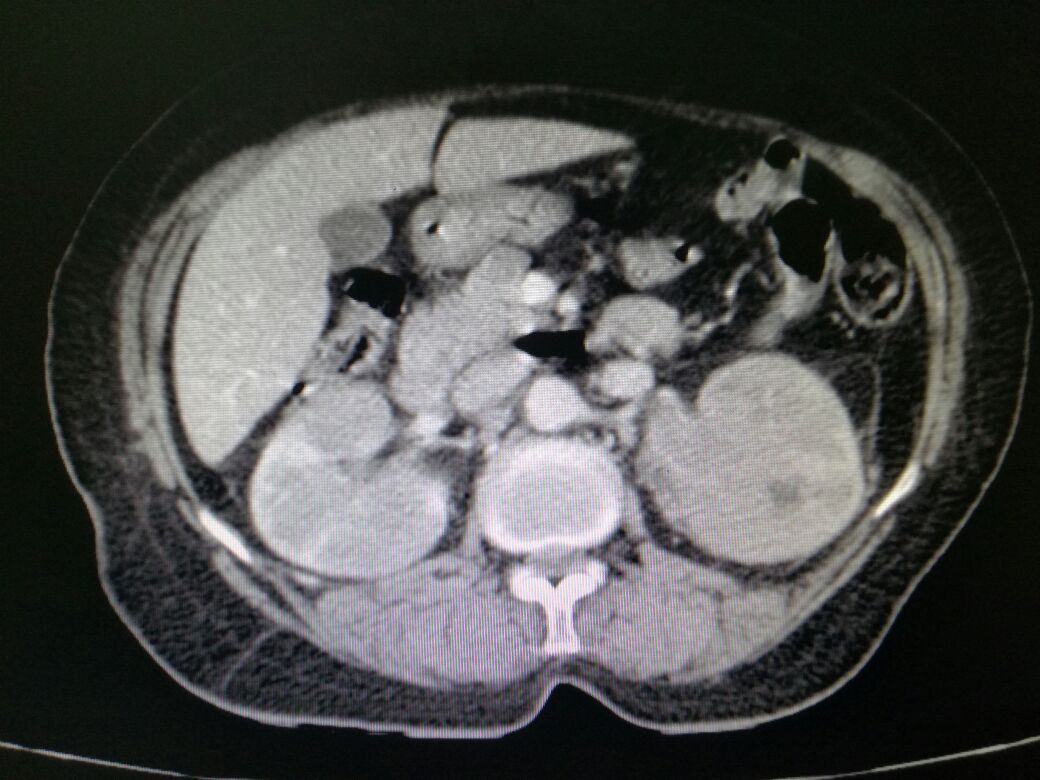[1]
Li W, Sun Z. Mechanism of Action for HDAC Inhibitors-Insights from Omics Approaches. International journal of molecular sciences. 2019 Apr 1:20(7):. doi: 10.3390/ijms20071616. Epub 2019 Apr 1
[PubMed PMID: 30939743]
[2]
Stanescu AL, Acharya PT, Lee EY, Phillips GS. Pediatric Renal Neoplasms:: MR Imaging-Based Practical Diagnostic Approach. Magnetic resonance imaging clinics of North America. 2019 May:27(2):279-290. doi: 10.1016/j.mric.2019.01.006. Epub
[PubMed PMID: 30910098]
[3]
Blas L, Roberti J, Petroni J, Reniero L, Cicora F. Renal Medullary Carcinoma: a Report of the Current Literature. Current urology reports. 2019 Jan 17:20(1):4. doi: 10.1007/s11934-019-0865-9. Epub 2019 Jan 17
[PubMed PMID: 30656488]
[4]
Gupta R, Amanam I, Rahmanuddin S, Mambetsariev I, Wang Y, Huang C, Reckamp K, Vora L, Salgia R. Anaplastic Lymphoma Kinase (ALK)-positive Tumors: Clinical, Radiographic and Molecular Profiles, and Uncommon Sites of Metastases in Patients With Lung Adenocarcinoma. American journal of clinical oncology. 2019 Apr:42(4):337-344. doi: 10.1097/COC.0000000000000508. Epub
[PubMed PMID: 30741758]
[5]
Velvet AJJ, Bhutani S, Papachristos S, Dwivedi R, Picton M, Augustine T, Morton M. A single-center experience of post-transplant lymphomas involving the central nervous system with a review of current literature. Oncotarget. 2019 Jan 11:10(4):437-448. doi: 10.18632/oncotarget.26522. Epub 2019 Jan 11
[PubMed PMID: 30728897]
[6]
Sakr HI, Buckley K, Baiocchi R, Zhao WJ, Hemminger JA. Erdheim Chester disease in a patient with Burkitt lymphoma: a case report and review of literature. Diagnostic pathology. 2018 Nov 24:13(1):94. doi: 10.1186/s13000-018-0772-2. Epub 2018 Nov 24
[PubMed PMID: 30474563]
Level 3 (low-level) evidence
[7]
Tsuchimoto A, Masutani K, Omoto K, Okumi M, Okabe Y, Nishiki T, Ota M, Nakano T, Tsuruya K, Kitazono T, Nakamura M, Ishida H, Tanabe K, Japan Academic Consortium of Kidney Transplantation (JACK) Investigators. Kidney transplantation for treatment of end-stage kidney disease after haematopoietic stem cell transplantation: case series and literature review. Clinical and experimental nephrology. 2019 Apr:23(4):561-568. doi: 10.1007/s10157-018-1672-1. Epub 2018 Dec 24
[PubMed PMID: 30584654]
Level 2 (mid-level) evidence
[8]
Oda Y, Ishioka K, Ohtake T, Sato S, Tamai Y, Oki R, Matsui K, Mochida Y, Moriya H, Hidaka S, Kobayashi S. Intravascular lymphoma forming massive aortic tumors complicated with sarcoidosis and focal segmental glomerulosclerosis: a case report and literature review. BMC nephrology. 2018 Oct 29:19(1):300. doi: 10.1186/s12882-018-1106-z. Epub 2018 Oct 29
[PubMed PMID: 30373554]
Level 3 (low-level) evidence
[9]
Uppal NN, Monga D, Vernace MA, Mehtabdin K, Shah HH, Bijol V, Jhaveri KD. Kidney diseases associated with Waldenström macroglobulinemia. Nephrology, dialysis, transplantation : official publication of the European Dialysis and Transplant Association - European Renal Association. 2019 Oct 1:34(10):1644-1652. doi: 10.1093/ndt/gfy320. Epub
[PubMed PMID: 30380110]
[10]
Ouyang ZZ, Peng TS, Cao QH, Ouyang Y, Li JX, Wei QX, Zhan H. T-cell lymphoma with rhabdomyolysis: case report and literature review. Brazilian journal of medical and biological research = Revista brasileira de pesquisas medicas e biologicas. 2018:51(11):e6278. doi: 10.1590/1414-431X20176278. Epub 2018 Oct 8
[PubMed PMID: 30304093]
Level 3 (low-level) evidence
[11]
Benoni H, Eloranta S, Ekbom A, Wilczek H, Smedby KE. Survival among solid organ transplant recipients diagnosed with cancer compared to nontransplanted cancer patients-A nationwide study. International journal of cancer. 2020 Feb 1:146(3):682-691. doi: 10.1002/ijc.32299. Epub 2019 Apr 11
[PubMed PMID: 30919451]
[12]
Mrdenovic S, Zhang Y, Wang R, Yin L, Chu GC, Yin L, Lewis M, Heffer M, Zhau HE, Chung LWK. Targeting Burkitt lymphoma with a tumor cell-specific heptamethine carbocyanine-cisplatin conjugate. Cancer. 2019 Jul 1:125(13):2222-2232. doi: 10.1002/cncr.32033. Epub 2019 Mar 6
[PubMed PMID: 30840322]

